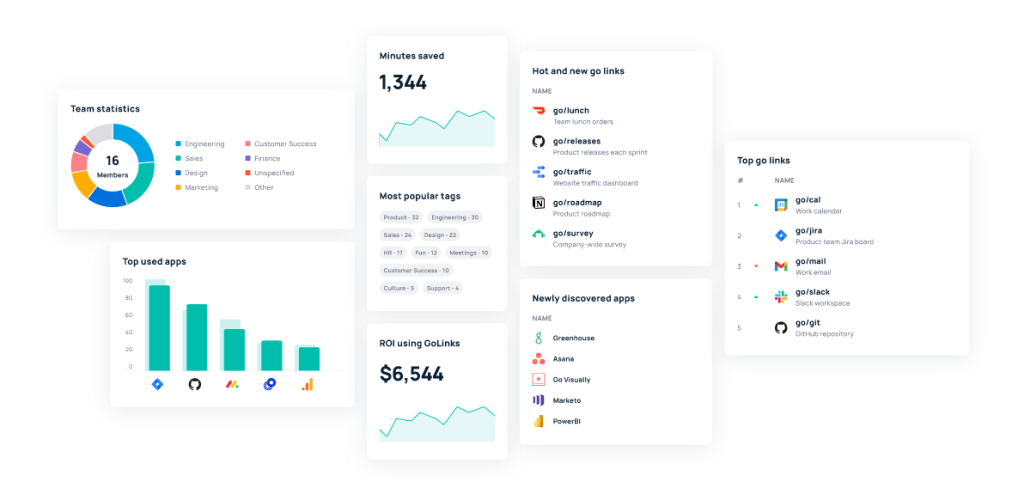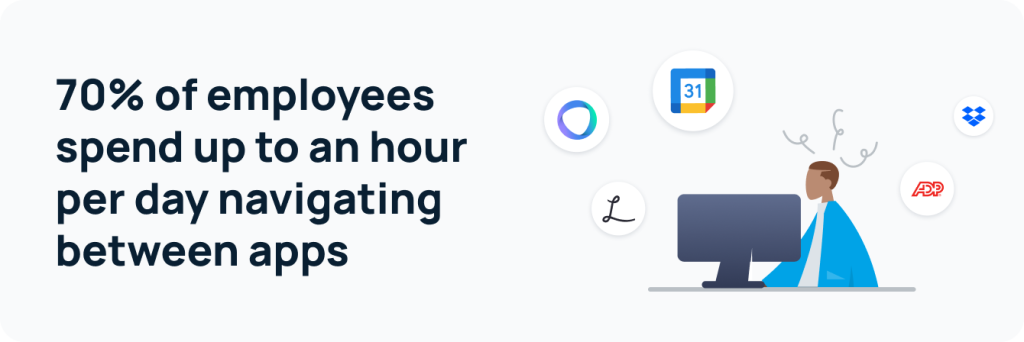The average organization deploys 16.24 human resources (HR) solutions.
That’s a hefty tech stack — but is it optimized?
An optimized HR tech stack ensures that you have all the tools you need, without paying for tools you don’t. The right stack of HR technology should:
- Automate repetitive tasks, giving you more time to focus on strategic initiatives.
- Offer analytics to empower better decision-making.
- Improve the digital employee experience and better engage your team.
- Reduce the risk of human error, like payroll mistakes.
HR is a difficult job. If your HR tech stack is making your life harder, here are five steps you can take to assess your HR software, reduce redundancies, and create a streamlined technology flow for all of your HR needs.
Step 1: Audit your HR tech stack
In order to optimize your HR tech stack, you first need to understand how you’re using your existing tools. Your ideal stack can vary based on your HR team and processes. For example, the tools and processes for a global enterprise will probably look different than HR processes for a startup.

Regardless, an effective HR tech stack should help with the following functions:
- Talent acquisition
- Recruiting
- Payroll
- Benefits
- Onboarding
- Information management
- Employee engagement
While auditing your HR software, identify what’s being utilized and underutilized. Talk to your team to see what tools they find helpful and which ones they don’t. Use GoLinks Analytics to establish any gaps in your tech stack and provide data-driven recommendations to your leadership team.

Step 2: Eliminate unnecessary (or redundant) HR tools
U.S. companies waste an average of $247 per desktop on unused or rarely used software. Additionally, nearly 70 percent of employees say they spend up to an hour per day navigating between apps. Eliminating unnecessary or redundant HR tools offers significant cost and time savings.

It’s important to note that opting for free HR tools won’t necessarily save you time or money. Instead, you can pare back to a few comprehensive software tools that streamline your processes and integrate with your other tools.
Do any of your current tools offer redundant capabilities? If so, choose one with the most benefits for your team. You can also change permissions or subscription levels to save money, rather than eliminating tools altogether.
Step 3: Implement new HR software
Optimizing your HR tech stack may require you to invest in new tools. Your technology stack should use the fewest tools possible, without compromising on function, usability, and collaboration. Here are a few types of HR software and top tools we recommend in each category.
Talent acquisition and recruiting
The hiring process is one of the most important functions of HR. Talent acquisition and recruiting tools help attract qualified talent to your business. They also assess, manage, and track applications through every step of the hiring process. Not only does this help you find the best talent, but it also helps you manage a seamless interview process for your top candidates. Common recruiting tools include Lever and TalentLyft.
Human resources information systems (HRIS) and human capital management (HCM)
From small to large companies, managing employee information is crucial for HR processes. HRIS and HCM platforms are often the core tool of HR departments because they manage employee information, policies, and procedures all in one secure tool. Popular HRIS and HCM tools include Bamboo HR and Workday.
Payroll and benefits
Payroll software ensures that paychecks are on time, accurate, and comply with tax regulations. Plus, many benefits tools offer data-driven compensation reviews, equitable pay structure guidance, and competitive salary recommendations. The right compensation tool will empower your team to make the best decisions regarding salaries, benefits, and compensation. Common payroll and benefits tools include Rippling and PeopleKeep.
Onboarding and employee engagement
The onboarding process is the first step in retaining top talent. Your onboarding process should be clear, helpful, and efficient. Onboarding and engagement tools streamline your job training, ongoing professional development, performance management, and employee feedback.
GoLinks is a game changer for onboarding. This tool allows you to link to resources, training materials, and process documentation with easy-to-remember go links (like go/payroll, go/training-videos, or go/onboarding).

Step 4: Set up time-saving integrations
We call it a tech stack because it’s not just about what tools you use, but also how they work together.
When considering new HR tools, make sure the tools you choose offer integrations with the rest of your tech stack. Prioritize software with multiple functions and built-in integrations with other HR software.
Pro tip: If you have a tool that’s missing an integration that you’d like to have, don’t be afraid to reach out to that company to see if they are able to work on a new integration.
Step 5: Use GoLinks to easily navigate your tech stack
When you’re using multiple HR tools, it can be time-consuming to navigate back and forth between them.
Maybe you need a specific page that is buried in your bookmarks. Or maybe you have so many tabs open that it’s hard to keep track of them.
GoLinks solves this problem by making it super easy to navigate to any of your HR tools. For example:
- Use a go link to access your HRIS like go/bamboo
- Use a go link to access hiring information like go/greenhouse
- Use a go link to access your daily calendar like go/cal
Since these links are short and easy to remember, you can quickly type them into your browser whenever you need them.
Optimize your HR tech stack
Whether you’re building your HR tech stack from scratch or streamlining your HR software, start with the basics.
Assess the tools and processes you currently use, and identify areas for improvement. Get rid of redundancies in your system that may be costing you time and money. Fill in any gaps with new HR tools that can do more with less.
And don’t forget — your tech stack is only as strong as its integrations. No matter what HR tools you use, GoLinks can streamline your processes, boost collaboration, and make it easier for your entire team to access the HR tools and documents they need.
Access and share resources instantly with GoLinks
Try for free














